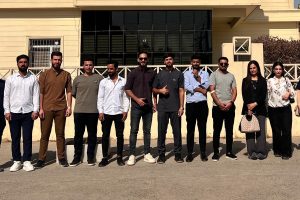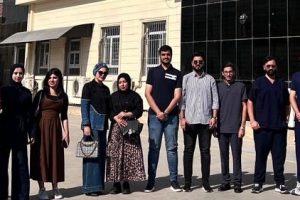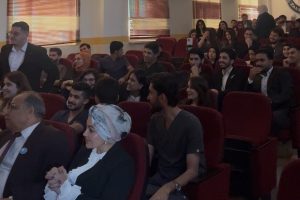Students from the Department of Anesthesia Technologies Engage in Intensive Hands-On Activities at Erbil West Emergency Hospital
A group of students from the Department of Anesthesia Technologies at Cihan University–Erbil conducted a scientific visit to Erbil West Emergency Hospital (Rojawa), where they participated in intensive hands-on activities.
The visit, which took place on Thursday, October 30, 2026, under the supervision of Dr. Mohammed Amin Sarmad Qasim, involved the participation of third-year students: Yusuf Muhannad Anwar, Pirzha Kaifi, and Alaa Hussein. The visit began with a comprehensive field tour of several vital and sensitive units within the hospital. These included the Triage and Reception Hall, the Red Zone (Emergency and Trauma Hall) designated for critically ill patients, the Yellow Zone (Follow-up and Monitoring Hall) for moderate cases, and the Medical Intensive Care Unit (ICU), where patients with critical conditions are placed under close observation. During the tour, the students closely observed the patient admission process, rapid case assessments, and the decision-making mechanisms involved in initiating treatment. This experience significantly enhanced their understanding of how to manage complex and urgent medical cases in an emergency setting.
The students were later introduced to the latest medical devices and their operating mechanisms in detail. These included the DC shock device for regulating heart rhythms, the ultrasound device for imaging internal organs, the ventilator for assisting breathing, the blood pressure monitor for measuring blood pressure, and the pulse oximeter for measuring blood oxygen levels. Furthermore, they received detailed practical training on locating veins and correctly inserting intravenous cannulas, as well as preparing and administering medications to patients.
Another crucial aspect of the training involved learning how to scientifically and accurately take a patient’s medical history, which is essential for making accurate diagnoses and developing appropriate treatment plans. This practical training enabled the students to apply their theoretical knowledge of medical devices and procedures in a real-world hospital environment.







